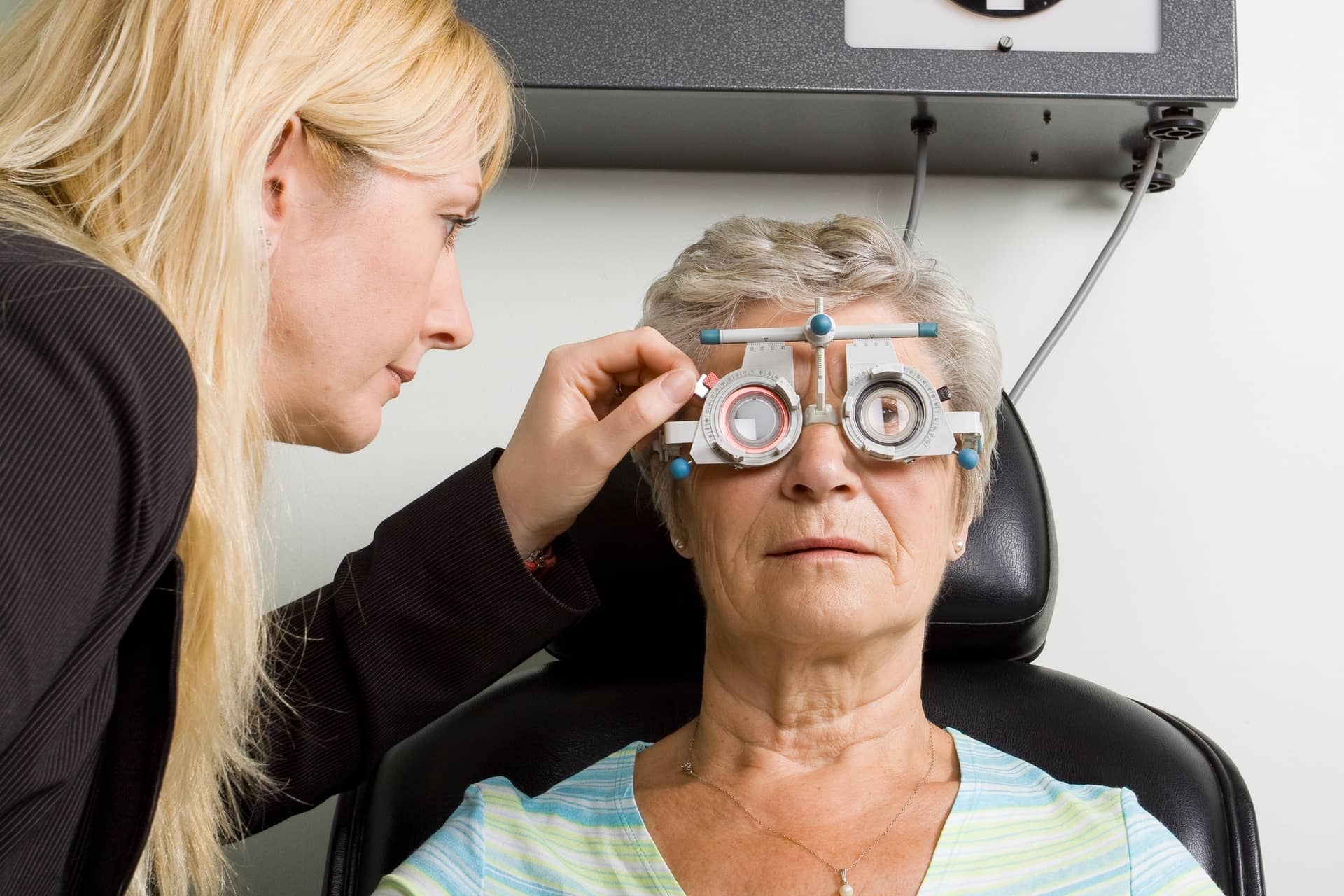
That’s clearly of little help. So an early diagnostic tool is urgently needed.
Scientists now believe they may have found a good one. Not only can this test find the plaques, it can find them way before the person shows any symptoms of memory loss. . .
Strange at it may seem, this test for Alzheimer’s requires no examination of the brain itself. Because the eyes are an extension of the brain, the solution to early detection could lie with something as simple as a routine visit to the eye doctor.
Two separate teams of researchers from the UK and Canada presented their findings at the Alzheimer’s Association International Conference in Toronto earlier this year.
This is what they reported.
Macular Thickness Tied to Neurodegeneration
The UK team’s study included 33,068 people between 40 and 69 years of age and with good eyesight.The researchers took a spectral domain optical coherence topography scan of each participant. This measures the volume of the macula, a group of neurons at the back of the eye. As a person ages, the thickness of this layer decreases. Participants were also given tests to evaluate memory, reasoning and reaction time.
Those with a thinner macula performed worse on the cognitive tests, putting them at greater risk of Alzheimer’s.
Mr. Praveen Patel, a consultant ophthalmic surgeon at Moorfield’s Eye Hospital, London said, “these exciting findings show the value of large-scale studies for identifying new biomarkers…which could lead to the discovery of new mechanisms of neurodegeneration.”
Dr. Simon Ridley, research director at Alzheimer’s Research UK, was equally enthusiastic: “Non-invasive tests such as this could allow ophthalmologists to aid in the identification of people at risk of memory decline…”
Alzheimer’s Brain Plaques Seen in the Eye
While macular thickness as a potential marker for Alzheimer’s was first reported in 2012, the Canadian researchers at the conference announced that amyloid brain deposits – a hallmark of Alzheimer’s – can be seen for the first time in a new diagnostic tool.Scientists conducted autopsies on 20 people who died of Alzheimer’s as well as six dogs that died with dementia symptoms. As expected, the brains of these unfortunates were full of amyloid. But the researchers also found the deposits in the victims’ eyes by using a high-tech imaging technique that makes use of polarized light.
Melanie Campbell, a professor at the School of Optometry and Vision Science at the University of Waterloo, had this to say:
“We’re using the retina as a window on the brain. Having characterized deposits of amyloid beta in the neural layers of the retina in those with Alzheimer’s disease and not in those without, we are now developing a non-invasive optical technique of imaging the deposits in the living eye.”
She believes the scan could become widely available to test for the early signs of the disease.
Color Changes Detect Alzheimer’s
Outside of the conference, recently published research in mice demonstrated for the first time that color shifts in light shone in the eyes and reflected back by the retina are associated with the earliest stages of Alzheimer’s.It’s a technique called hyperspectral endoscopy.
It displays images along different light wavelengths. If there are amyloid deposits in the retina, this will create patterns of scattering in the shortest wavelengths. It’s the same situation that causes the sky to be blue at midday but red or orange when rising or setting.
Lead researcher Dr. Swati More from the University of Minnesota said, “We saw changes in the retinas of Alzheimer’s mice before the typical age at which neurological signs are observed. The results are close to our best case scenario for outcomes of the project.”
Trials on Alzheimer’s patients and a control group of healthy volunteers began in July.
In the near future one or more of these tests are bound to be made available if the results of human trials are positive — which looks very likely.
So don’t be surprised during your next optical health check if you’re asked whether you want to be tested for Alzheimer’s, too.
Meanwhile, if you’re interested, our sister company Green Valley Natural Solutions offers an eye supplement that supports good macular health. It not only helps you avoid macular degeneration, but in view of the findings in this issue it may even help with Alzheimer’s disease.
